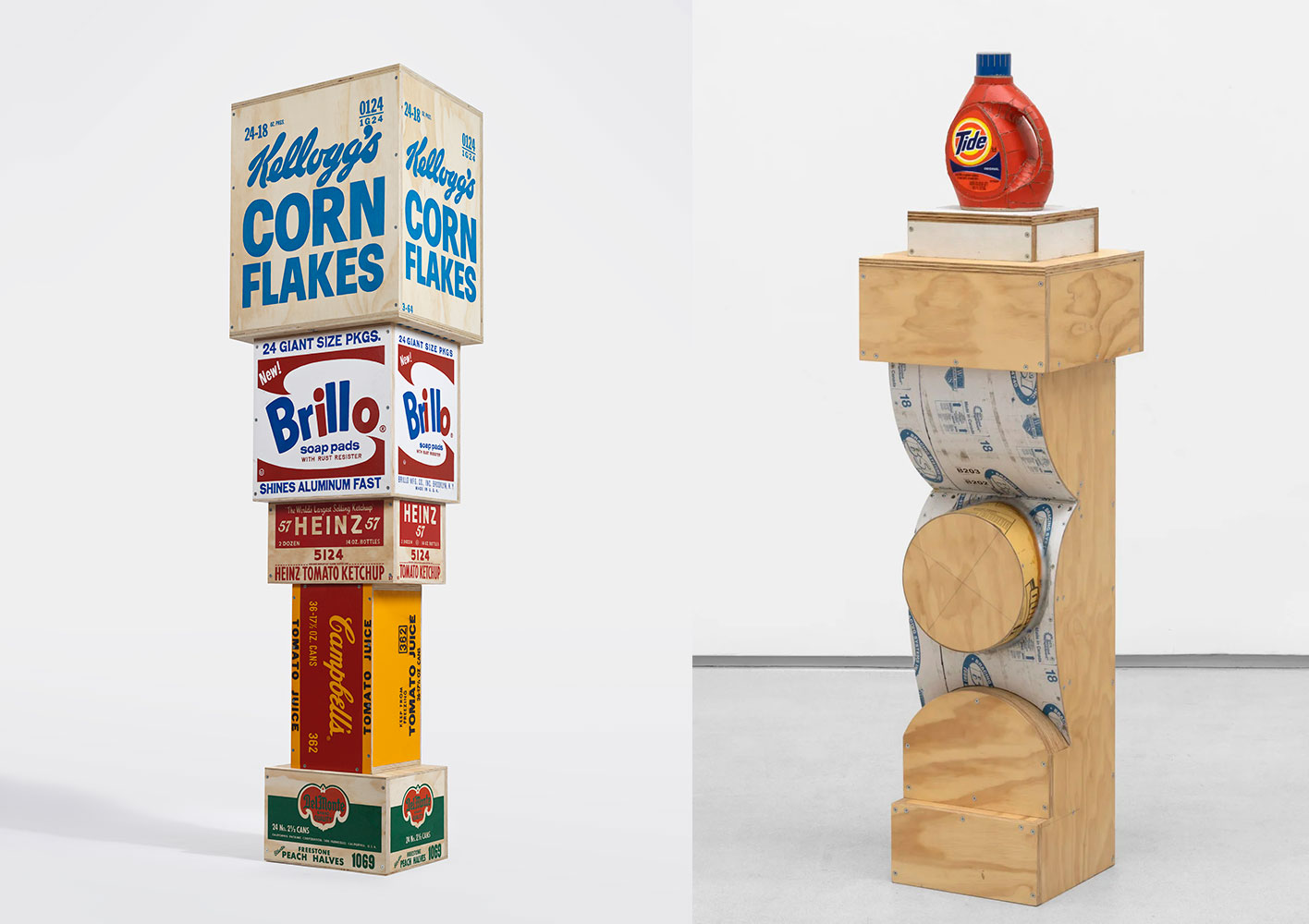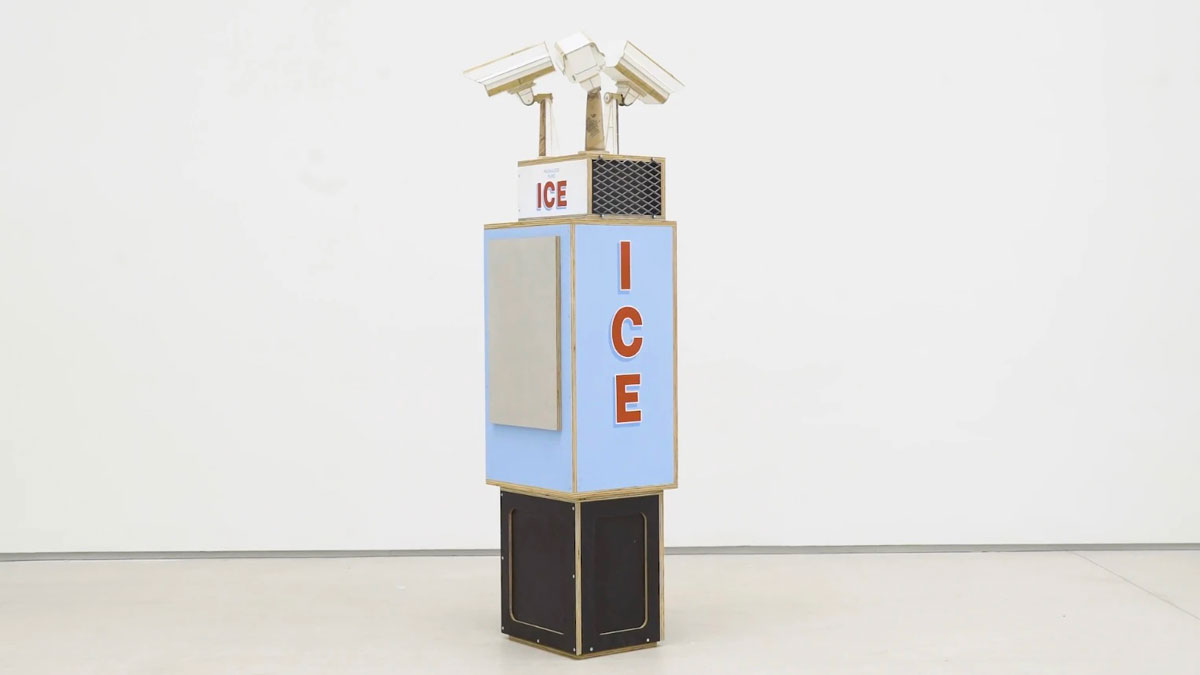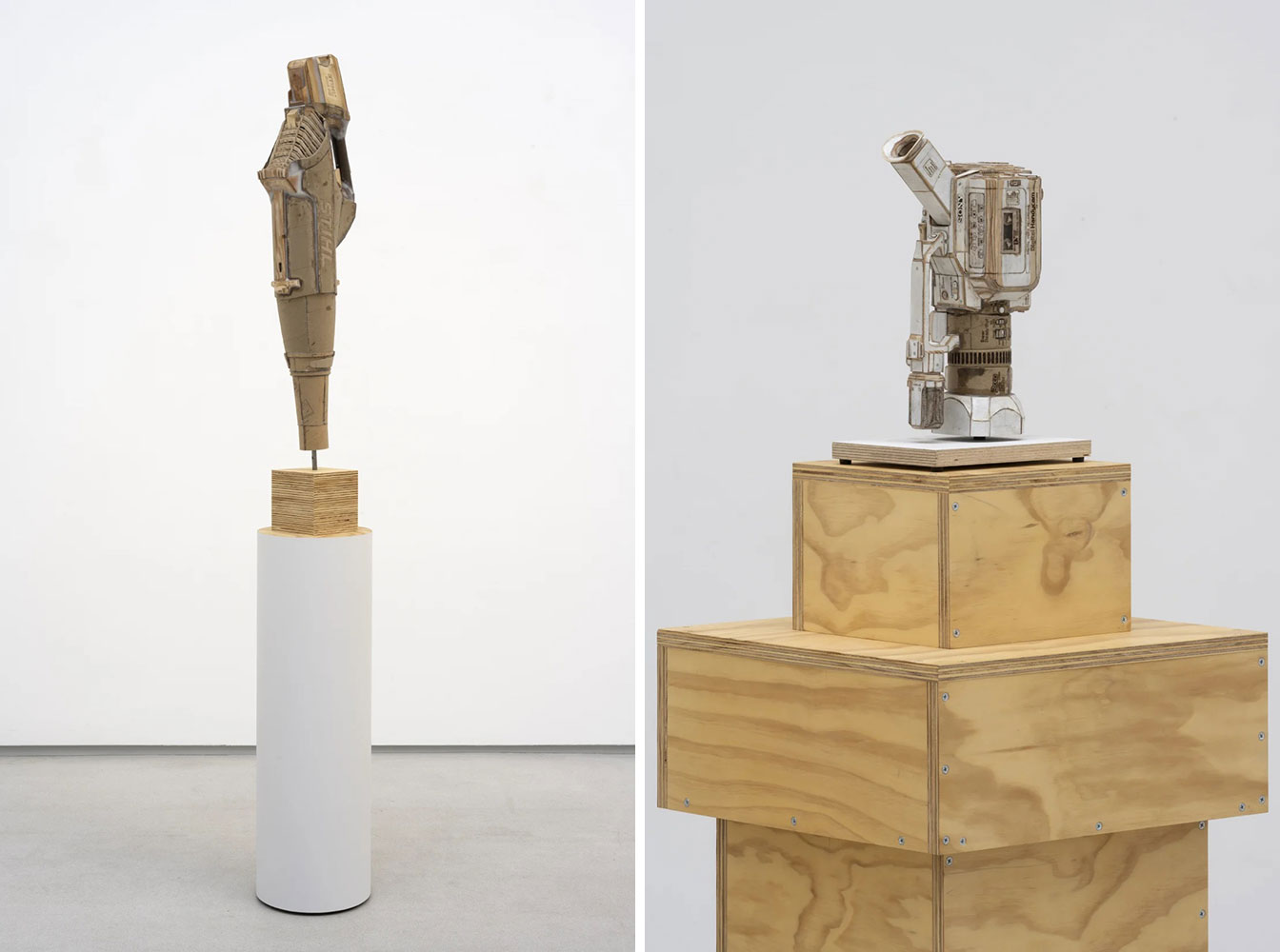ART-PRESENTATION: Tom Sachs-Ritual
 Tom Sachs is best known for his elaborate recreations of various Modern icons, all of them masterpieces of engineering and design of one kind or another. In an early show he made Knoll office furniture out of phone books and duct tape; later, he recreated Le Corbusier’s 1952 Unité d’Habitation using only foamcore and a glue gun. Other projects have included his versions of various Cold War masterpieces, like the Apollo 11 Lunar Excursion Module, and the bridge of the battleship USS Enterprise.
Tom Sachs is best known for his elaborate recreations of various Modern icons, all of them masterpieces of engineering and design of one kind or another. In an early show he made Knoll office furniture out of phone books and duct tape; later, he recreated Le Corbusier’s 1952 Unité d’Habitation using only foamcore and a glue gun. Other projects have included his versions of various Cold War masterpieces, like the Apollo 11 Lunar Excursion Module, and the bridge of the battleship USS Enterprise.
By Efi Michalarou
Photo: Thaddaeus Ropac Gallery Archive
Tom Sachs’ solo exhibition “Ritual” features a selection of never-before-seen works exhibited on bespoke pedestals inspired by modernist shapes, demonstrating the comprehensive spectrum of Sachs’ distinctive sculptural practice. Each sculpture is characterised by the same bricolage aesthetic that has gained Sachs a unique position in the field of contemporary sculpture. Influenced by the subcultures of an urban metropolis like New York, specifically the phenomenon of New York City’s corner stores, known as bodegas due to their roots in the city’s Latin American communities of the 1950s, the artist replicates commonplace industrial objects using everyday materials, including plywood, cardboard, resin, tape, and paint. The sculptures bear traces of their making, becoming vehicles for a reflection on the creation of value and human labour. The exhibition emphasises the potential for a singular household object to be embedded within a variety of seemingly disparate everyday systems or rituals. The laundromat has long been an essential necessity of city life. Within this context, items like the laundry basket or leaf blower hold particular significance. However, the connotations of these seemingly everyday objects are frequently reconfigured. The increasing ban of leaf blowers in wealthy neighbourhoods like Palm Beach or Beverly Hills is perceived as a representation of class struggle because the conflict places professional gardeners, whose ranks are heavily Latino and Asian American, in opposition to the white people who hire them but complain about the noise their jobs entail. “Stihl Leaf Blower” (2020) replicates those used to clean lawns, gardens and street corners across America. Aside from its contemporary political resonance, the slender, elegant and anthropomorphic shape of the sculpture is reminiscent of Constantin Brancusi’s “Bird in Space” (1923). Sachs first encountered the work of Brancusi during his formative years at Bennington College, learning about the pioneering sculptor outside the confines of formal art history classes and developing a personal relationship with Brancusi’s work through library research and trips to New York City, Philadelphia, as well as endless trips to his atelier in the Marais. While some sculptures in the exhibition might directly evoke the shape of Brancusi’s most famous works such as “The Bird in Space” or “The Kiss”, Sachs’ relation to the artist is more connected to the way Brancusi challenged the traditional distinction between the sculpture and the base. In “Figurative Tower” (2021), Sachs’ perfectly obsessed over plywood renditions of Andy Warhol’s iconic boxes are stacked to become their own Brancusian base. Many art historians have noted Brancusi’s passionate concern for the relationship between his sculptures and the space around them and how, over time, the distinction between the sculptures, the works commonly referred to as their bases, and the other objects in Brancusi’s studio became even more blurred. This evolution, which corresponds to a deeper questioning of the parameters of sculpture, certainly informed Sachs’ own ambiguous view on sculpture-as-object and object-as-sculpture. The camera is a recurring element in Sachs’ work. The earliest existing work by the artist is a clay replica of a Nikon SLR camera that he made when he was 8 years old as a gift for his father. The “VX1000” was a DV tape camcorder released by Sony in 1995. It was intended as a ‘prosumer’ model, to bridge the gap between high-end consumer and low-end professional users. Playing off the consumer fetishisation of photographic equipment, Sachs’ cameras deconstruct the technology of photography while at the same time revealing these ubiquitous machines as compelling subjects in their own right. In “Tide Bottle (orange)” (2020), Tom Sachs pays tribute to one of the most frequently shoplifted items in America, Tide is a laundry detergent that has also become a feature of the black market economy, as it is used as an ad hoc street currency for drug transactions. A 150-ounce Tide bottle can be traded for either $5 cash or $10 worth of weed or crack cocaine, earning the nickname of ‘liquid gold’ on certain corners. In recent years, store owners and managers have reported regular raids on their household-products aisle.
Photo: Tom Sachs, The Laundress, 2015, Latex paint, polyurethane varnish, epoxy resin, plywood, 144.1 x 70.8 x 70.8 cm / 56.7 x 27.9 x 27.9 in, © Tom Sachs, Courtesy the artist and Gallery Thaddaeus Ropac
Info: Thaddaeus Ropac Gallery, Ely House, 37 Dover Street, London, England, Duration: 3/6-31/7/2021, Days & Hours: Tue-sat 10:00-18:00, https://ropac.net

Right: Tom Sachs, Tide Bottle (orange), 2020, Mixed media, including synthetic, polymer on cardboard and epoxy resin, 168.3 x 39.4 x 33 cm / 66.1 x 15.5 x 13 in, © Tom Sachs. Photo: Genevieve Hanson, © Tom Sachs, Courtesy the artist and Gallery Thaddaeus Ropac


Right: Tom Sachs, VX 1000, 2016, Plywood, latex paint, cardboard, epoxy resin, steel hardware, 165.1 x 45.7 x 45.7 cm (65 x 18 x 18 in, © Tom Sachs. Photo: Genevieve Hanson, © Tom Sachs, Courtesy the artist and Gallery Thaddaeus Ropac

